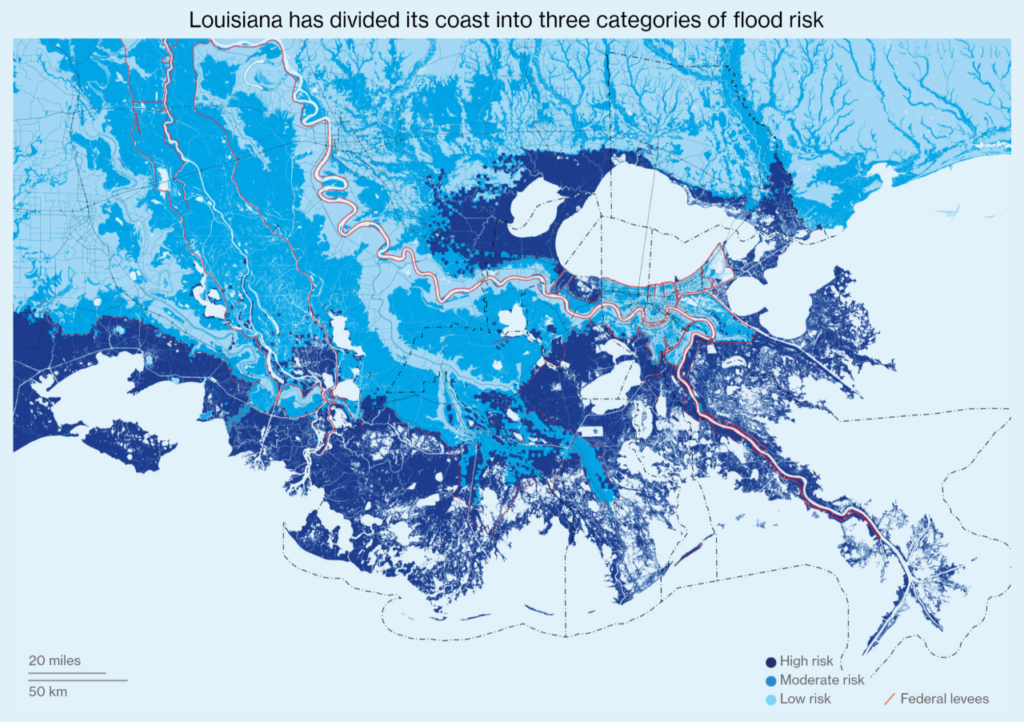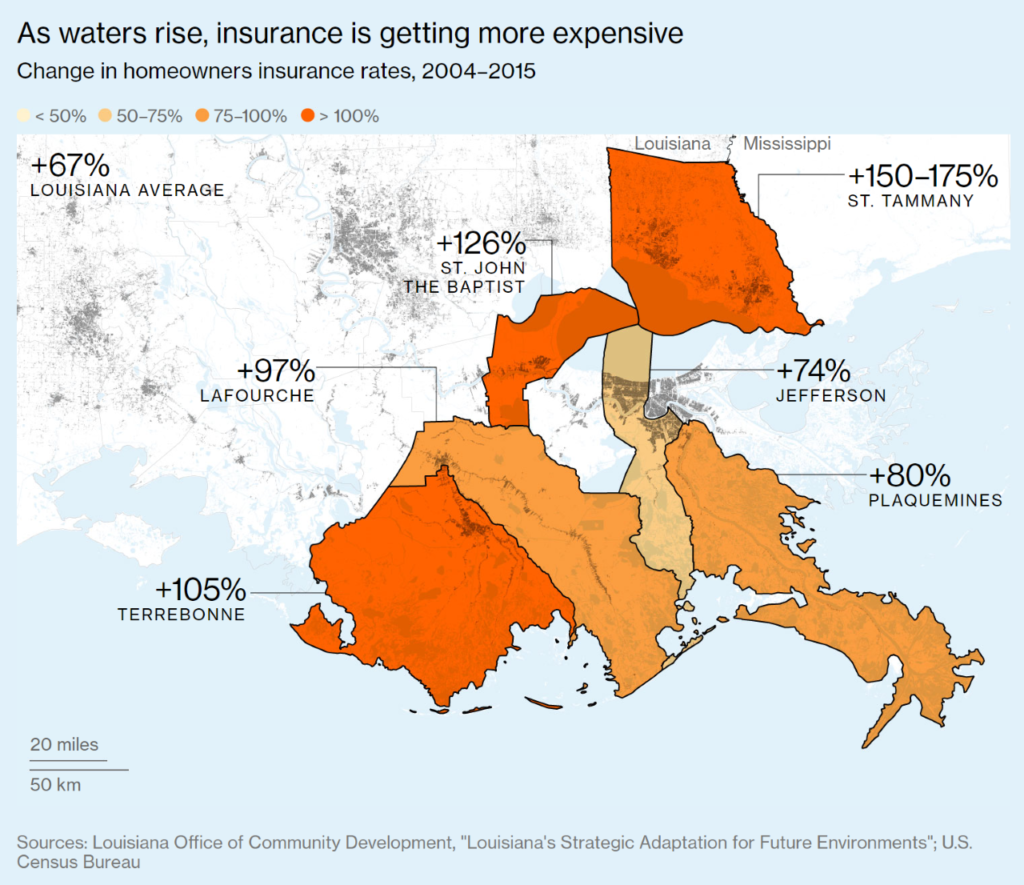Louisiana unveils ambitious plan to help people get out of the way of climate change

By Christopher Flavelle and Mira Rojanasakul
15 May 2019
(Bloomberg) – Gerard Braud has no plans to leave his handsome Creole-style house with its 15-foot-high front porch on the north shore of Lake Pontchartrain, a short drive from New Orleans. “Peacefulness and tranquility” is how he explains the appeal of living here.
Except that thanks in part to climate change, the lake keeps hopping the short seawall in front of Braud’s house and taking over his neatly manicured lawn—not just during hurricanes, but also when the tide is high and the winds are strong. His flood insurance premiums have almost doubled to $5,000 a year, making him wonder how difficult it would be to sell even if he wanted to.
In flood-prone areas across southern Louisiana, residents such as Braud risk running out of choices: living in homes that are hard to leave but put them in harm’s way. In response, the state on Wednesday issued a sweeping blueprint—the first of its kind in the U.S.—for managing the ongoing population movement away from its coastal areas, and preparing inland communities to receive an infusion of people. [more]
Louisiana Unveils Ambitious Plan to Help People Get Out of the Way of Climate Change



